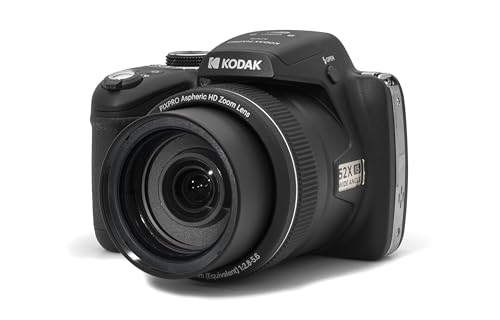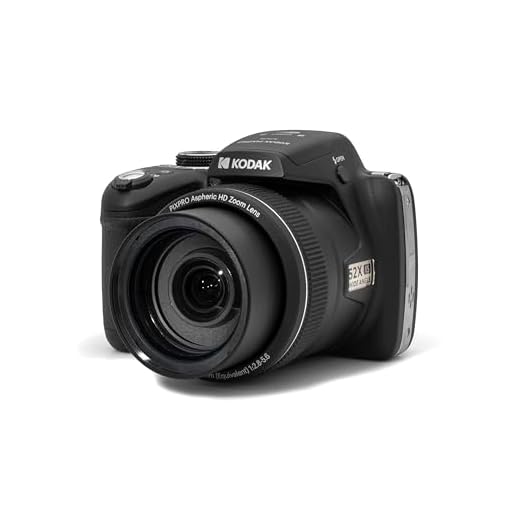




Frame per second (FPS) is a crucial aspect of digital cameras that determines how many frames or images can be captured in a single second. It is a key factor in determining the smoothness and quality of video recordings and the ability to capture fast-moving subjects with clarity.
When it comes to digital cameras, FPS is often associated with video recording capabilities. The higher the FPS, the smoother the video playback will be, as more frames are captured per second. This is particularly important in scenarios where capturing fast action or motion is essential.
Professional-grade cameras often offer higher FPS rates, allowing for more flexibility in capturing dynamic scenes. However, it’s important to note that higher FPS can also result in larger file sizes, which may impact storage requirements and editing processes.
Understanding Frame Per Second in Digital Cameras
Frame per second (fps) is a crucial specification to consider when choosing a digital camera. It refers to the number of frames or images a camera can capture in one second. A higher fps value indicates a more capable camera for capturing fast-moving subjects or creating smooth video recordings.
Importance of Frame Per Second
Fps plays a significant role in determining the quality of videos or photos captured by a camera. A higher fps allows for smoother and more detailed footage, especially when recording fast-paced action scenes or sports events. It also affects the camera’s ability to capture continuous shots without missing important moments.
| Frame Per Second | Performance |
|---|---|
| 24-30 fps | Ideal for standard video recording |
| 60 fps | Great for capturing smooth motion and action sequences |
| 120+ fps | Excellent for slow-motion videos and precise frame-by-frame analysis |
When choosing a digital camera, consider your intended use and the fps requirements for your specific photography or videography needs. Understanding fps can help you select the right camera to achieve the desired results.
Definition and Importance of FPS
Frame per second (FPS) is a measurement of how many frames (individual images) a digital camera captures in one second. It is a crucial factor in determining the smoothness and quality of video recordings.
Definition of FPS
FPS indicates the number of frames a camera captures and displays per second. A higher FPS rate results in smoother motion and more detailed videos. Common FPS rates in digital cameras range from 24 FPS to 60 FPS.
Importance of FPS
Having a higher FPS is essential for capturing fast-moving subjects or creating slow-motion effects. It also contributes to the overall quality and professional look of the video content produced by digital cameras.
Factors Affecting FPS in Cameras
Several factors can influence the frame per second (FPS) performance of digital cameras. Understanding these factors can help photographers optimize their camera settings and achieve the desired results.
1. Sensor Size
The size of the image sensor in a camera can impact its FPS capabilities. Larger sensors typically offer better low-light performance and higher FPS compared to smaller sensors.
2. Processor Speed
The processing power of the camera’s image processor plays a crucial role in determining the FPS rate. Cameras with faster processors can handle higher FPS rates and continuous shooting modes more effectively.
- 3. Shutter Speed and Exposure
The chosen shutter speed and exposure settings can affect the camera’s ability to capture fast-moving subjects at a high FPS. Faster shutter speeds and appropriate exposure settings can result in sharper images with smoother motion blur.
- 4. Lens Quality and Aperture
The quality of the lens and its maximum aperture size can impact the camera’s FPS performance. High-quality lenses with wider apertures allow more light to enter the camera, enabling faster shutter speeds and higher FPS rates.
Choosing the Right FPS for Your Needs
When selecting the frame per second (FPS) for your digital camera, it’s important to consider your specific needs and preferences. The FPS setting determines how many frames the camera captures per second, which can affect the smoothness and quality of your videos or images.
Here are some factors to consider when choosing the right FPS:
| Low FPS (24-30) | Great for capturing cinematic footage with a more traditional look. Ideal for videos that will be viewed on TV or in theaters. |
| Medium FPS (30-60) | Offers a balance between smooth motion and storage space. Suitable for general video recording and everyday use. |
| High FPS (60+) | Provides crisp and detailed footage, perfect for capturing fast-moving subjects or creating slow-motion effects. Requires more storage space. |
Ultimately, the best FPS setting for you will depend on your creative vision, the type of content you’re producing, and the technical capabilities of your camera. Experiment with different FPS settings to find the one that suits your needs best.
Common Misconceptions About FPS
Despite its importance in capturing smooth motion in videos, there are several common misconceptions about frames per second (FPS) in digital cameras:
- More FPS is always better: While higher FPS can result in smoother videos, it may not always be necessary. The optimal FPS depends on the type of content you are capturing and the final output.
- Higher FPS means better quality: FPS primarily affects the motion smoothness and not the overall image quality. Factors like resolution, sensor size, and lens quality play a bigger role in determining image quality.
- Low FPS is unusable: Lower FPS settings can be suitable for certain types of videos, such as cinematic shots or time-lapse sequences. It’s essential to understand when lower FPS can be creatively beneficial.
- Increasing FPS always improves slow-motion: While higher FPS settings enable better slow-motion effects, the quality of slow-motion footage also depends on the camera’s capabilities and processing power.
- Every camera with the same FPS performs equally: The actual performance of a camera at a specific FPS can vary based on factors like sensor technology, image processor, and software optimization.
Benefits of High FPS for Photography and Videography
Frame per second (FPS) plays a crucial role in both photography and videography, offering a range of benefits for capturing high-quality images and videos. Here are some key advantages of having a high FPS in digital cameras:
1. Smooth Motion Capture
With a higher FPS, you can capture fast-moving subjects with greater clarity and smoothness. This is particularly important for sports photography or action videography, where every detail counts.
2. Enhanced Low-Light Performance
A higher FPS allows for better performance in low-light conditions, as each frame is captured more quickly, reducing motion blur and noise. This is essential for shooting in challenging lighting situations.
- Improved Image Quality
- Greater Flexibility in Post-Processing
- Ability to Create Slow-motion Effects
Overall, having a high FPS in your digital camera can significantly elevate the quality and versatility of your photography and videography projects.
Comparing FPS Across Different Camera Models
When choosing a digital camera, one important factor to consider is the frames per second (FPS) it can capture. FPS refers to the number of individual frames or images that a camera can capture in one second. Higher FPS values result in smoother motion and better quality footage.
As you compare different camera models, you will notice that FPS can vary significantly. Some entry-level cameras may offer FPS rates of 3-5, while professional-grade cameras can achieve FPS rates of 10 or higher. The FPS capabilities of a camera are influenced by factors such as sensor size, processing power, and the camera’s intended use.
When comparing FPS across different camera models, it is essential to consider your specific needs and preferences. If you plan to shoot fast-action sports or wildlife photography, a camera with a higher FPS rate would be ideal. On the other hand, if you mainly shoot still subjects or landscapes, a lower FPS rate may suffice.
Ultimately, the FPS capabilities of a digital camera play a crucial role in determining its suitability for your photography needs. By understanding and comparing FPS values across different camera models, you can make an informed decision and choose a camera that meets your requirements.
Future Trends in FPS Technology
As technology continues to advance, the future of frame per second (FPS) in digital cameras is promising. Manufacturers are constantly striving to improve the FPS capabilities of their cameras to meet the demands of consumers and professionals alike. Here are some trends to look out for in FPS technology:
1. Higher FPS Rates
One of the most noticeable trends in FPS technology is the push for higher frame rates. With advancements in sensor technology and image processing, we can expect to see digital cameras capable of capturing even more frames per second in the future. This will allow for smoother, more fluid motion in videos and better freeze-frame capabilities in still images.
2. Enhanced Low-Light Performance
Another trend in FPS technology is the improvement of low-light performance. Manufacturers are working on developing sensors that can capture more light in challenging lighting conditions, leading to better FPS performance in low-light environments. This will be particularly beneficial for photographers and videographers who often work in dimly lit settings.
| Future Trends in FPS Technology | Description |
|---|---|
| Higher FPS Rates | Advancements in sensor technology and image processing will lead to cameras capable of capturing more frames per second. |
| Enhanced Low-Light Performance | Improvement in sensors to capture more light in challenging lighting conditions for better FPS performance in low-light environments. |
FAQ
What does “frame per second” mean in digital cameras?
Frame per second (fps) in digital cameras refers to the number of still images that the camera can capture in one second. It indicates how many pictures the camera can take in rapid succession.
How does the frame per second affect the quality of photos?
The frame per second rate affects the ability of the camera to capture fast-moving subjects and moments. A higher fps rate allows for smoother and more detailed capture of fast-action scenes, while a lower fps rate may result in missing crucial moments or a choppy sequence of images.
What is a good fps rate for a digital camera?
The ideal fps rate depends on the type of photography you are doing. For sports or wildlife photography where fast-moving subjects are common, a camera with a higher fps rate (e.g., 10 fps or more) would be beneficial. For general photography, a camera with a fps rate of 5-8 fps should suffice for most situations.
Can you adjust the frame per second on a digital camera?
Some digital cameras allow you to adjust the frame per second rate manually, while others have fixed fps rates. Cameras with adjustable fps rates give you more control over the speed at which you capture images, allowing you to tailor your shooting experience to different scenarios.









